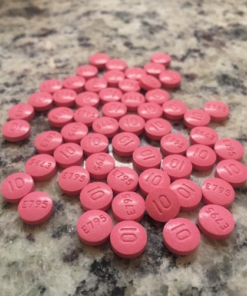What are quaaludes?
Quaaludes (methaqualone) are a synthetic, barbiturate-like, central nervous system depressant and a popular recreational drug in the U.S. from the 1960s until the 1980s, when its use was made illegal by the Drug Enforcement Agency (DEA). The active ingredient, methaqualone, is an anxiolytic (lowers anxiety) and a sedative-hypnotic drug that leads to a state of drowsiness.
These drugs, imprinted with the number “714” on the tablet, were initially introduced as a safe barbiturate substitute to help induce sleep, but were later shown to have addiction and withdrawal symptoms similar to other prescription barbiturates.
Uses of quaaludes
In 1972, Quaaludes were one of the most frequently prescribed sedatives in United States.
In prescribed doses, Quaaludes promotes relaxation, sleepiness and sometimes a feeling of euphoria (happiness, calmness). It causes a drop in blood pressure and slows the pulse rate. These properties are the reason why it was initially thought to be a useful sedative and anxiolytic.
It became a recreational drug due to its euphoric (“high”) effect. Quaaludes were a popular drug of abuse during much of the 1970s, even though both the US and Britain tightened control around their use and dispensing.
Quaaludes dosage
When it was a legal medication, methaqualone was available in tablet and capsule form and came in different strengths.
- Oral methaqualone dosages ranged from 75 to 150 mg for light sedation.
- A commonly prescribed dose was 300 mg. Up to 600 mg was used for strong sedation.
- Tolerance develops rapidly and some users may take up to 2000 mg daily to achieve the same effects.
- Onset of action is approximately 30 minutes after taking methaqualone and duration of action is between 5 to 8 hours.
Overdose
Quaaludes are a central nervous system (CNS) depressant.
- Examples of other CNS depressants include meprobamate, diazepam (Valium) and gamma hydroxybutyrate (GHB).
- Overdose of methaqualone can lead to seizures, coma or death.
The range of dangerous doses vary widely. Because these drugs are made in illegal labs, the strength and contents of the actual product may not be known, putting the user at even higher risk.
Taking doses of over 300 mg can be dangerous for first-time users. Quaalude doses of about 8,000 mg per day can be fatal, but depend upon the state of the user’s tolerance.
Death can result at much lower doses if Quaaludes are taken with alcohol (ethanol), which is also a central nervous system depressant. “Luding out” where Quaaludes were taken with wine, became a popular college pastime in the 70’s.
Quaaludes use during pregnancy and breastfeeding
Quaaludes are not recommended during pregnancy as the effects on human fetal development are not clear.
There is no data available about the effects of Quaaludes in breastfeeding.
Contraindications
Quaaludes should not be taken with alcohol or with other central nervous system depressants. This increases the depressant effects and can be fatal.
Do not drive or operate machinery while taking Quaaludes.
Quaalude side effects
Common side effects of Quaaludes include:
- dizziness
- nausea
- vomiting
- diarrhea
- abdominal cramps
- fatigue
- itching
- rashes
- sweating
- dry mouth
- tingling sensation in arms and legs
- seizures
- reduced heart rate
- slowed breathing (respiration).
Quaaludes can also cause erectile dysfunction and difficulty achieving orgasms. At high doses it can cause mental confusion and loss of muscle control (ataxia).
As with most drugs of abuse, it was found that Quaaludes users made poor decisions and lacked normal abilities under its influence. Driving skills of Quaalude users were often impaired and lead to fatal car accidents.
This is not a complete list of side effects and others may occur.
| Quantity | 30 tablets, 60 tablets, 100 tablets, 200 tablets, 300 tablets, 500 tablets |
|---|
Be the first to review “Mandrax (Quaaludes) 300mg” Cancel reply
Related products
Uncategorized
Uncategorized
Uncategorized
Uncategorized
Uncategorized
Uncategorized
Uncategorized
Uncategorized























Reviews
There are no reviews yet.